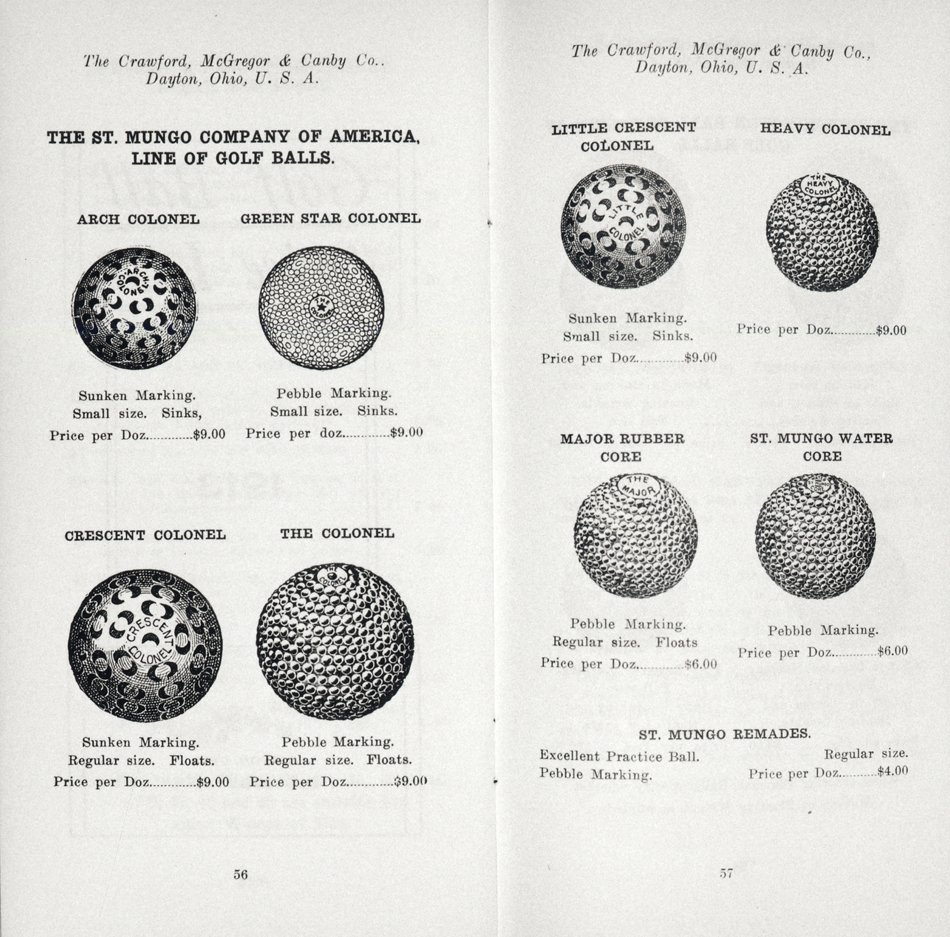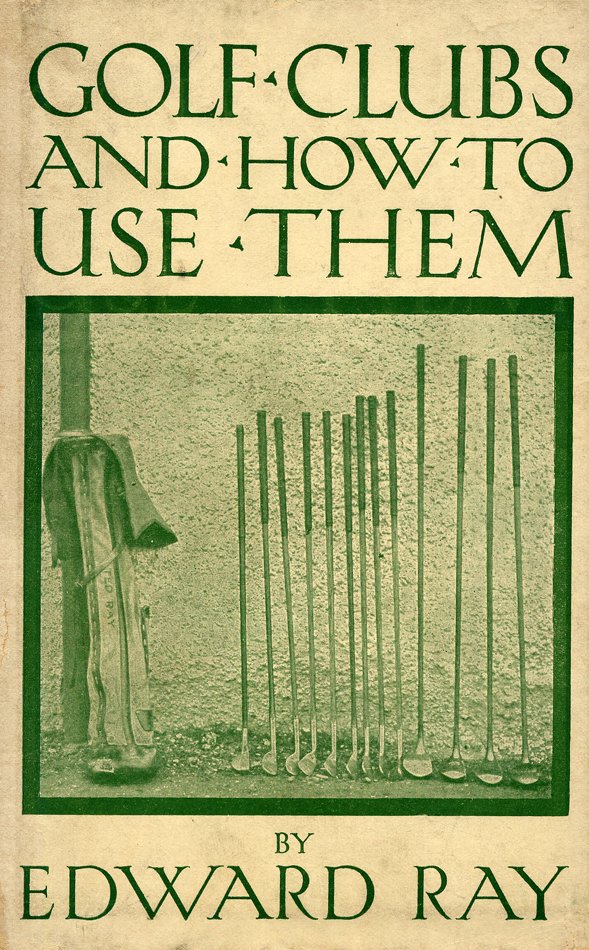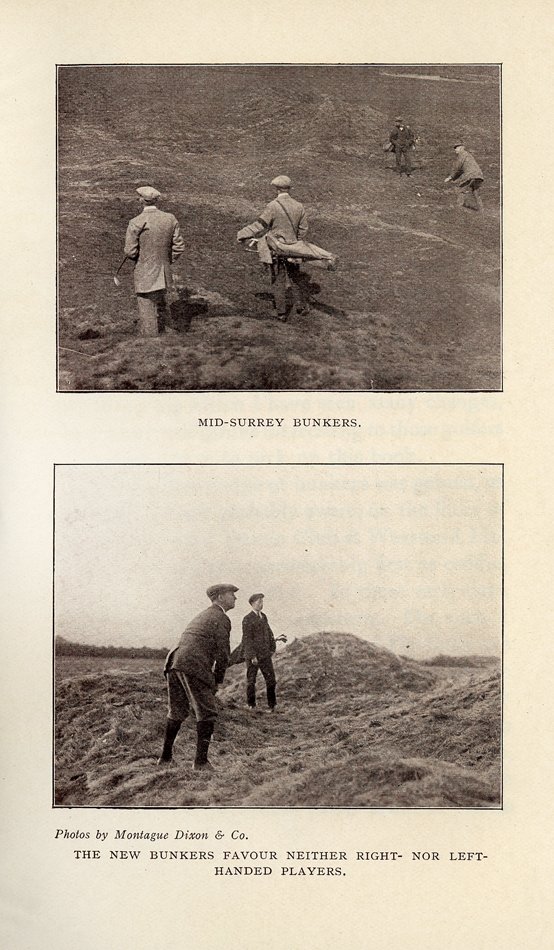IMPLEMENTS OF THE GAME
Balls and clubs have always been golf's irreducible elements. However, like many other facets of the game, the implements of golf have changed dramatically over the centuries.
The earliest balls used by Dutch colfers and Scottish golfers were wooden. By the seventeenth century, the wooden ball was being replaced by the feathery ball, a leather ball painted white and stuffed with goose or chicken feathers. The feathery ball could be driven much longer distances, but it was not very durable and had to be handmade in a time-consuming and expensive process. In the 1850s and 1860s, the feathery ball began to be replaced by the gutta percha, a ball with a core molded from the gum of a Malayan tree. The gutta percha ball had the unfortunate tendency to shatter in midair, but it cost only a quarter as much as the feathery and made golf a significantly more affordable sport. The final step in the evolution of the ball was made in 1901, when Coburn Haskell, a chemist at the Goodrich Tire and Rubber Company, developed the rubber-core ball. Durable and cheap to produce, the new ball contributed greatly to the popularization of golf in the early twentieth century.
Clubs underwent similar changes over the years, as evidenced by descriptions in books on golf. Early golf clubs were handmade from wooden blocks and shaped to the specifications of the individual golfer. Clubs bore names redolent of their Scottish heritage: niblick and brassie, spoon, mashie, cleek, and putter. Over time, the niblick, mashie, and cleek, like the putter, were given metal heads and came to be called irons. The brassie, spoon, and driver retained their wooden heads and were called woods. Even these distinctions began to erode, though, once metal became a more widely used material for club manufacture. In 1924, the U.S. Golf Association approved the use of steel shafts in golf clubs. Today, the clubheads of irons can be solid or hollowed out or constructed of a compound other than steel; while the clubheads of woods can be made of metal, graphite, a plastic compound, or other synthetic material.
From the late nineteenth century onward, of course, balls and clubs have never been considered sufficient equipment for a proper game of golf. Bags, shoes, jackets, hats, umbrellas, and all manner of specialized fashions are also de rigueur, and the catalogues of firms such as Wilson-Western and Crawford, McGregor & Canby show the degree to which the market has met and shaped the golfer's needs.




